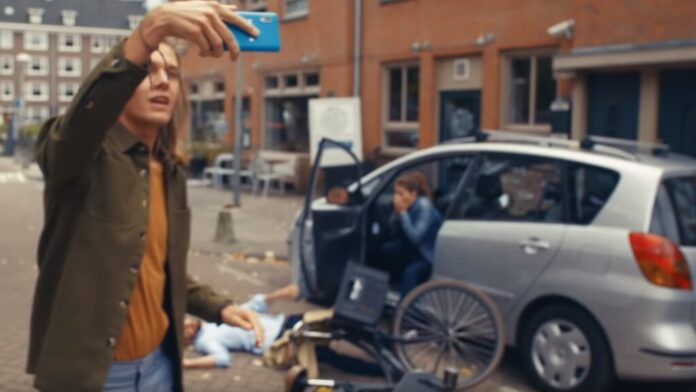Explanations
The other explanation is a bit more optimistic in a way. “It also stems from our primal instinct. If you see something unpleasant happening to someone, you know you should prevent it. Watching is a way of learning, as it were, of the dangers that others run.”
Programmed brains
We learn best from negative situations, van der Leest knows. “Our brains are programmed to prioritise bad things. Think of that one bad review you read. Or when your boss has one point of criticism after ten compliments. That’s what sticks.”
Fairy tales play a role here too, according to the psychologist. “Fairy tales are actually stories about accidents. Don’t walk in the dark forest, because you’ll meet the wolf and it will eat you.”
Social media
What doesn’t exactly help is the existence of social media. “We have made a habit of whipping out our phones to film such an accident”. And then it also ‘pays’ to post those videos. “They spread at a crazy speed. While you should actually realise that this is totally unacceptable”. Although it does not seem likely that change will happen any time soon. “For example, there are sites owing their very existence to these kinds of images.”
Campaign
But what can we do to prevent this situation? “There was a campaign to prevent filming in case of accidents. But that actually signals that filming is the norm. It would be better to show what people should do instead. Get out of the way, drive on, let emergency workers do their job”.
Van der Leest sees another good example in Germany, where filming and photographing accidents is punishable by law. “They have an advertisement showing a curious boy walking through the blockade of the fire brigade to look at an accident. He calls his mother to tell her about it, but then hears the phone ringing from the car wreck. This is a real goosebump moment.”
These kinds of videos get to the heart of the problem, thinks Van der Leest. “It shows very clearly that it’s about people. We have started objectifying victims too much. We see them almost as a kind of actors. But these are real people, with family and friends”.
Law
In the Netherlands, filming after accidents is not yet punishable by law, unless you use the phone from a moving car of course. At the end of 2020, CDA, PvdA and GroenLinks wanted to change that. They even pleaded for a fine of 21,000 euros or imprisonment. To date, no such law has been passed or implemented.
















